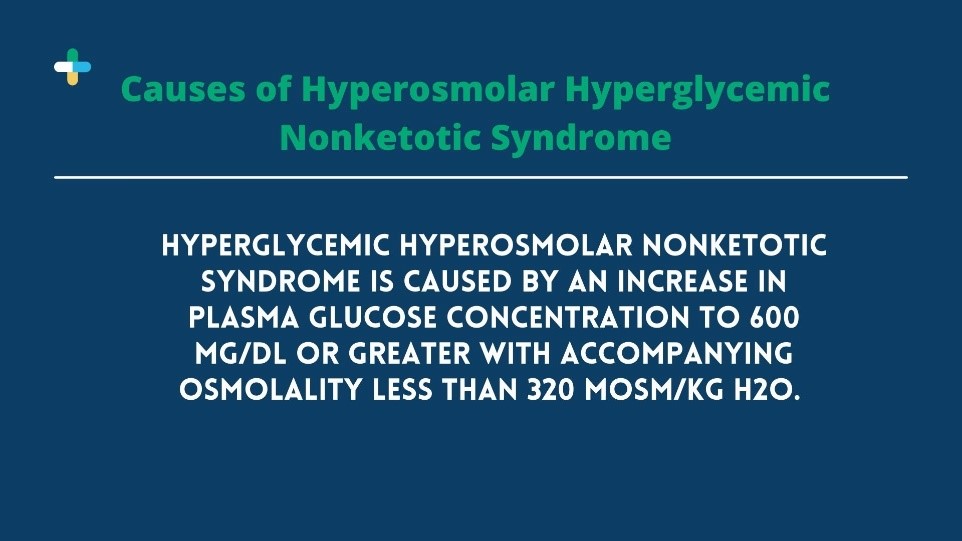Hyperglycemic Hyperosmolar Nonketotic Syndrome-Student Guide
Introduction
Hyperglycemic hyperosmolar nonketotic syndrome (HHNS) is a life-threatening medical emergency when the body cannot produce or use insulin. The condition can be caused by cancer, diabetes, kidney failure, and other chronic conditions.
The goal of treatment is to restore normal blood sugar levels and correct fluid, electrolyte, and acid-base imbalances as quickly as possible. Early diagnosis and prompt treatment are critical for the best chance of recovery.
This post will cover what HHNS is, how it’s diagnosed, treatment options for clients diagnosed with this condition, and some prevention strategies that may help reduce the risk of developing this condition. As you read this guide, keep in mind that our top writers are ready to help in case you get stuck with your nursing assignment or can’t complete it due to reasons such as a busy schedule. All you need to do is place an order with us!
Disclaimer: The information presented in this article is not medical advice; it is meant to act as a quick guide to nursing students, for learning purposes only, and should not be applied without an approved physician’s consent. Please consult a registered doctor in case you’re looking for medical advice.
What is Hyperglycemic Hyperosmolar Nonketotic Syndrome (HHNS)?
HHNS, also known as a hyperosmolar hyperglycemic nonketotic syndrome (HHNS), is a rare but serious complication of diabetes mellitus. HHS can cause life-threatening dehydration, electrolyte and acid/base imbalances, and coma.
Causes of Hyperosmolar Hyperglycemic Nonketotic Syndrome
The hyperglycemic hyperosmolar nonketotic syndrome is caused by an increase in plasma glucose concentration to 600 mg/dL or greater with accompanying osmolality less than 320 mOsm/kg H2O. The increased blood sugar levels cause dehydration which leads to changes in fluid balance and electrolyte disturbances such as hyponatremia, hypotension, metabolic acidosis, ketoacidosis. (may lead to coma), lactic acidosis and hyperchloremic acidosis. This cause of HHS is referred to as “factitious” when the elevation in blood glucose results from the administration of excessive quantities of insulin (e.g., by clients or family members) or oral hypoglycemic agents with insufficient food intake. However, most cases are caused by a sudden loss of beta-cell function.
Signs and Symptoms of Hyperosmolar Hyperglycemic Nonketotic Syndrome (HHNS)
The hyperglycemic hyperosmolar syndrome symptoms include frequent or deep, rapid breathing, lethargy, and confusion, changes in the level of consciousness (LOC), seizures, and coma. Patients with hyperosmolar hyperglycemic nonketotic syndrome are often found to have serum glucose greater than 600mg/dL. Although the exact cause is unknown, it is believed that a combination of dehydration and hyperglycemia causes osmotic diuresis resulting in symptoms.
Blood pressure may be normal or low due to both volume depletion and intracellular shift of water. Heart rate is often high, reflecting elevated metabolic demand.
Other Symptoms
Other symptoms include nausea and vomiting, high fever without another source, extreme thirst, dry mouth with rapid breathing, fruity breath odor due to ketones in the bloodstream, and fatigue.
Pallor or cyanosis is present because of reduced perfusion.


PROGNOSIS of Hyperosmolar Hyperglycemic Nonketotic Syndrome
In individuals with lesser degrees of dehydration, electrolyte abnormalities, and hyperglycemia, spontaneous recovery may occur.
The prognosis is poor in clients who cannot recover from their acute symptoms or those who experience signs of cerebral edema. In these cases, the brain swells due to a lack of fluid around it. Individuals with subarachnoid hemorrhage, cerebral edema, and coma are at the most significant risk for mortality. The mortality rate is as high as 61%, with most deaths occurring during hospitalization or within 30 days.
A person with HHNS should be observed until their serum glucose level returns to normal. Evaluating fluid and electrolyte imbalances is also necessary to ensure that clients do not experience further complications.
Clinical Features of Hyperosmolar Hyperglycemic Nonketotic Syndrome
The clinical features of HHNS include severe dehydration, hyperglycemia, and altered mental status. These symptoms can be caused by excessive release of ADH leading to inappropriate retention of water in the kidney tubules. This results in a reduced effective circulating volume, increased osmolality of the blood and extracellular fluid (ECF), and decreased blood flow to the brain. It can also cause volume depletion in other organs, such as the gastrointestinal tract.
As previously mentioned, diagnosis may be difficult due to its rarity. To confirm a diagnosis of HHNS, clinicians look for at least one of two diagnoses: exaggerated increase in ADH concentration or an inability to excrete free water.
Another rare cause of hyperosmolar hyperglycemic nonketotic syndrome is a deficiency in the CD2AP protein. The decreased activity of this protein leads to an increase in ADH production and subsequent inappropriate retention of extracellular fluids. This will result in hypovolemia, osmotic diuresis, and an increase in blood pressure. The ensuing dehydration results in a decrease in the blood volume with an increase in blood osmolality. This is what leads to HHNS.
Diagnosis of Hyperosmolar Hyperglycemic Nonketotic Syndrome
Many cases are diagnosed based on symptoms and clinical features, as their physical examination findings could be nonspecific. Laboratory analysis can provide further information on the presence of dehydration and diabetes, metabolic acidosis, and elevated serum osmolality.
Diagnostic Tools
Diagnostic tools include:
- Electrolytes (sodium, chloride, bicarbonate, calcium)
- Blood glucose level (fasting >126 mg/dL or random >200 mg/dL)
- Blood urea nitrogen level (BUN –>30mg/dl, urine specific gravity up to 1.020)
- Urine osmolality >800 with serum osmolality of <300mOsm/L
- Fruity breath odor due to the presence of ketones in the blood.
Management of HHNS
In the emergency department (ED), the management of a person with hyperglycemic hyperosmolar syndrome is focused on aggressively treating dehydration and hyperosmolality. Patients should be treated for dehydration with normal saline or equivalent fluid boluses. Additionally, a 2-3% glucose solution may be infused to assist in stabilizing blood sugar levels by providing an osmotic diuresis and decreasing the effective circulating volume. Sedation may be necessary to control seizure activity, which is usually responsive to diazepam.
The use of a hypertonic glucose infusion is controversial because it may increase brain edema. Still, its use should be considered if there are any signs or symptoms of increased cerebral edema.
Treatment of Hyperosmolar Hyperglycemic Nonketotic Syndrome
Initial Treatment
The initial treatment for hyperosmolar hyperglycemic nonketotic syndrome is fluid resuscitation to correct the dehydration associated with this condition. The osmotic load of glucose in the body will cause water to move out into the interstitial space, resulting in hypovolemia. Thus, to prevent shock and other complications, patients in this condition require intravenous fluid resuscitation. Additionally, intravascular volume depletion may cause intracellular dehydration due to water movement out of cells into the interstitial space. To correct this, hypertonic saline is used to draw water back into the cells rapidly.
Treatment Strategies
Treatment strategies are aimed at reversing the hyperglycemic state and correcting severe dehydration.
Further Treatment
Further intervention depends on the severity of hypokalemia, acidosis, and metabolic derangement. Glucose concentrations should be maintained close to 250mg/dL for some time before normalizing. Once the glucose is under control, it should be allowed to rise at a rate of approximately 25mg/dL per hour. Insulin is tapered and replaced with either regular insulin or sliding scale insulin, depending on the client’s glucose level. Once the glucose is under control, patients should be treated for any electrolyte abnormalities (primarily potassium).


Supportive Care
Supportive care includes maintenance of adequate hydration, respiratory support, and prevention or treatment of seizures. Invasive monitoring can also be helpful to determine whether intracranial pressure has increased.
Results of phase II clinical trials show promising results in the management of HHNS for the prevention of cerebral edema when compared to standard care.
Complications of Hyperosmolar Hyperglycemic Nonketotic Syndrome
HHNS often causes a decrease in blood flow to the brain. This can lead to cerebral edema and occur within an hour of HHNS onset, increasing morbidity and mortality. Patients may also experience respiratory arrest resulting from decreased oxygen concentration. A study found that out of 24 patients admitted with HHNS, half were intubated for stabilization at some point during their hospitalization. There are no current guidelines indicating which patients would need intubation. Still, the researchers found that the most common factors leading to ventilation included altered mental status, seizure activity, and acute respiratory distress syndrome.
The mortality rate in this disease is considered low compared with other causes of hyponatremia but is significantly higher in patients that present with hyperosmolar nonketotic coma.
Prevention information for this disease lacks at this time. However, it is important to remember that the key factors preventing HHNS are controlling blood glucose levels and dehydration.


What is Familial Hyperosmolar Syndrome
Familial hyperosmolar syndrome is a hereditary disease associated with a mutation in the ADH4 gene transmitted in an autosomal dominant manner.
The condition was first described by Lewis in 1932.
In 2016, a 7-year-old girl presented with multiple metabolic abnormalities, including HHNS and a blood glucose level of >1,500 mg/dL. It was later determined that her mother had experienced similar symptoms four years previously. The mother’s condition was related to the ADH4 gene mutation in both family members.
This family served as an example for developing ADH4-based diagnostic tests and genetic counselling for clinicians treating families with similar phenotypes.
This patient also presented with diabetic ketoacidosis, indicating that her condition was related to the HHNS phenotype. Thus, this individual’s presentation highlights the importance of considering HHNS in patients presenting with DKA or HHNS.
Familial hyperosmolar syndrome is a rare autosomal dominant condition caused by germline mutations in ADH4. It presents with HHNS as well as abnormalities of gluconeogenesis, ketogenesis, and hepatic amino acid metabolism. These conditions are often difficult to diagnose due to the rarity of the disease, and clinical genetic testing helps confirm a diagnosis.
Familial hyperosmolar syndrome has a low incidence rate, but those affected have a high mortality rate, and patients are often misdiagnosed with DKA or HHNS. The only available treatment is genetic testing, allowing physicians to refer patients to clinical laboratories and obtain diagnostic genetic testing. Genetic counselling can also be useful in facilitating the family’s understanding of these genetic disorders, which can be potentially life-threatening.
According to American Medical Association, “Combined DKA-HHS is associated with higher mortality compared with isolated DKA or HHS. Severe hypokalemia and severe hypoglycemia are associated with higher hospital mortality in patients with hyperglycemic crises”, Pasquel Fj Umpierrez Ge Diabetes Journals 2019.


Factors Contributing to Mortality
Factors that have been shown to increase mortality include;
- Age over 50 and complications such as pulmonary edema, acute renal failure, ventricular fibrillation, or heart attack
- The rapid onset of symptoms leads to the inability of a person to communicate
- Difficulty diagnosing HHNS due to its rarity and overlap with other diseases
- An increase in intracranial pressure
- The severity of hyponatremia, acidosis and osmotic diuresis
- The likelihood of co-morbidities such as pneumonia.


Conclusion
HHNS can be dangerous in persons who have an impaired ability to concentrate urine because it leads to cerebral edema, respiratory arrest, and subsequent death. When a person presents with these symptoms, clinicians should immediately rule out other conditions that can cause hyponatremia, such as SIADH or a true pathological concentration of ADH.
Diagnostic testing should then be performed to confirm the diagnosis, with special attention paid to electrolytes and glucose levels. Intervention at this stage is largely supportive until the patient’s serum glucose levels return to normal. Frequent monitoring of blood pressure and testing for urinary concentrations of sodium, potassium, or ADH is also important to assess whether the individual can be weaned from vasopressors.
The cause of HHNS should also be identified as it will provide valuable information to other physicians about the function of proteins involved in water regulation.







